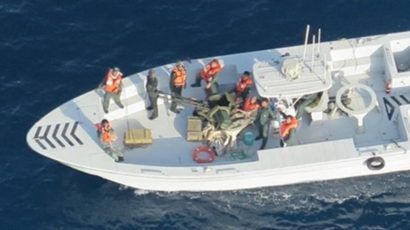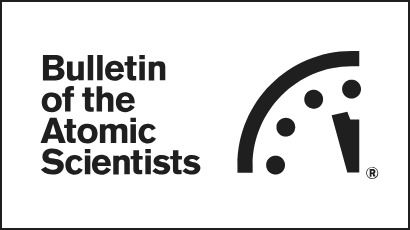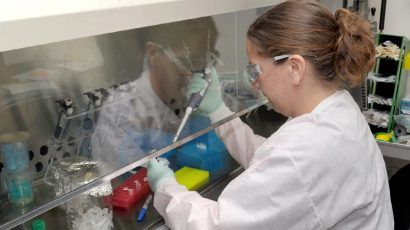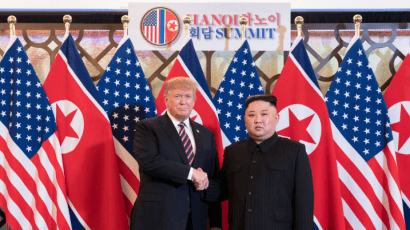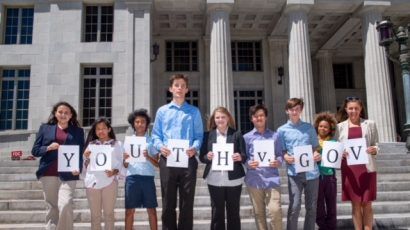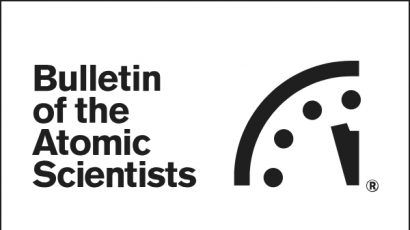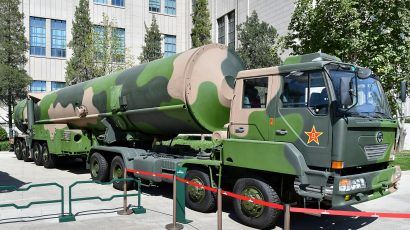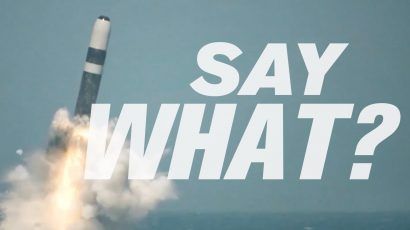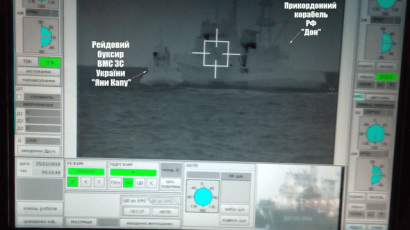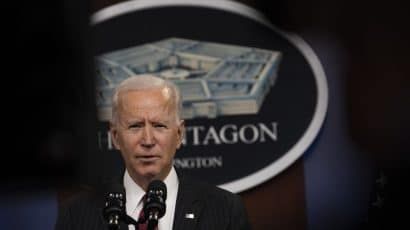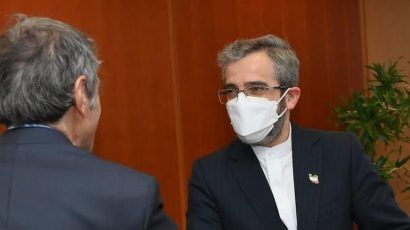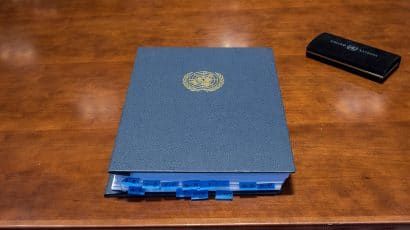Search results for trump
Pick your metaphor: Slo-mo video of imminent car crash. Two cats circling, back fur up and claws ready. A tail vigorously wagging its growling dog (to distract from possible impeachment). Given recent events, any reasonable response to the current state of US-Iranian relations almost has to include a good measure of foreboding.
Washington and Moscow hold the keys to the door of disarmament
The disarmament momentum created by Barack Obama's famous Prague speech was fading even before Donald Trump won the race to become Obama's successor. Now, prospects for disarmament seem murkier than ever. It is an interesting moment to take up my roundtable colleague Gregory Kulacki's argument that China, by displaying too much reluctance to implement its … Continued
Essential reading on lab leaks and gain-of-function research
Some biomedical research may be producing opportunities for catastrophe, rather than illuminating scientific results: A collection of Bulletin biosecurity coverage.
Summit Datebook 2: After Hanoi, relieved but still curious
There was an encouraging sign after talks abruptly ended in Hanoi: Neither side will walk away from diplomacy just yet, and the public messaging from both sides was positive. But there was also a worrisome sign: the inability to announce a date, even a rough one, for negotiators to meet again.
Climate trial of the century: justice delayed?
The fate of a landmark climate lawsuit, brought by youths seeking protection of the atmosphere, is up in the air.
Facing the central questions of nuclear disarmament
In order to achieve the ultimate goal of a world without nuclear weapons, it may be necessary to first achieve another goal—eliminating the reasons why nuclear weapons were developed in the first place.
Doomsday Clock Multimedia
Overview Current Time FAQ Timeline Dashboard Multimedia Virtual Tour Doomsday Clock Animated By Bulletin Admin Doomsday Slam By Thomas Gaulkin The Clock: A Brief History By Janice Sinclaire Know the Time By Bulletin Admin Why the Bulletin supports the March for Science By Bulletin Staff The Doomsday Clock, explained By Bulletin Admin The Doomsday Clock … Continued
Press Release: IT IS NOW 2 MINUTES TO MIDNIGHT
Bulletin of the Atomic Scientists Move Clock Ahead 30 Seconds, Closest to Midnight Since 1953; #RewindtheDoomsdayClock: Cool Trump Nuclear Rhetoric, Negotiate With North Korea, Stick With Iran Deal, Reduce US-Russian Tensions, and Insist on Global Action on Climate Change. WASHINGTON, D.C. – January 25, 2018 – Citing growing nuclear risks and unchecked climate dangers, … Continued
War threats in the White House
This just seems like we’re reading Kafka, said one retired ambassador
War clouds on the Korean peninsula: What would we do if…?
It’s worth considering what the United States and/or South Korea might do under a variety of scenarios involving provocative North Korean actions that do not cause mass death.
It is 30 seconds closer to midnight
The full text of the Bulletin Science and Security Board 2017 Doomsday Clock statement, which moved the Clock to two and a half minutes to midnight.
Trilateral arms control initiative: A Chinese perspective
On April 10, US Secretary of State Mike Pompeo told the Senate Foreign Relations Committee that the Trump administration wanted to include China in the New START treaty. New START is a bilateral arms control agreement between Russia and the United States that caps the number of deployed strategic nuclear warheads at 1,550 each. Later, … Continued
Say WHAT? — A case of low-yield nuclear thinking
Can a small nuclear warhead really make the world safer? In this installment of “Say WHAT?”—the Bulletin video series that casts a clear eye on fuzzy policy—we ask nuclear weapons expert Sébastien Philippe what he thinks about the latest nuclear craze.
What can the Kerch Strait incident teach about nuclear declaratory policy?
Nuclear-armed states need to adopt a uniform declaratory nuclear policy that strongly reduces the circumstances under which nuclear weapons would be used initially and also strongly delimits the cases where they would even be used to retaliate against nuclear attack. It appears that at this point in history an effective, if imperfect, nuclear declaratory policy for all nuclear-armed states could be: “The sole purpose of our nuclear forces is to defend our states, and our allies and partners, against imminent existential threat from nuclear-armed adversaries, and then only once all other means, diplomatic and conventional military, have been exhausted.”
Summits end; nonproliferation challenges don’t
In late March, just as representatives to the final Nuclear Security Summit were converging on Washington, Donald Trump was revealing to The New York Times his cavalier and irresponsible attitudes toward nuclear proliferation. Just last week, Trump became the presumptive Republican nominee for president. So perhaps now more than ever, it's important to impress on … Continued
The new US nuclear posture review is a major step backward
Biden’s Nuclear Posture Review takes a substantial step back from Obama’s objective of reducing the role of nuclear weapons in US security strategy, argues a nuclear policy expert.
Two steps to revive—and sustain—the Iran nuclear deal
Iran and the world powers met last week in Vienna in the hope of reviving the nuclear deal. But revival is only a first step. What’s needed is a plan for the nuclear deal to endure. Here are two clear (if not simple) steps for reviving—and sustaining—the Iran nuclear deal.
Six essential stories on the origins of COVID-19
The Bulletin has produced several important stories on the origins of COVID-19. Here are six of the best.
Global nuclear policy is stuck in colonialist thinking. The ban treaty offers a way out.
A post-colonial future won’t happen tomorrow. But the Ban Treaty can help us get there by addressing at least four underlying assumptions held by the current, dominant perspective on national security.
Congress now has 6 Native Americans—a record. What’s their stance on climate change?
Since the founding of the United States, just 23 Native Americans have been elected to Congress.
